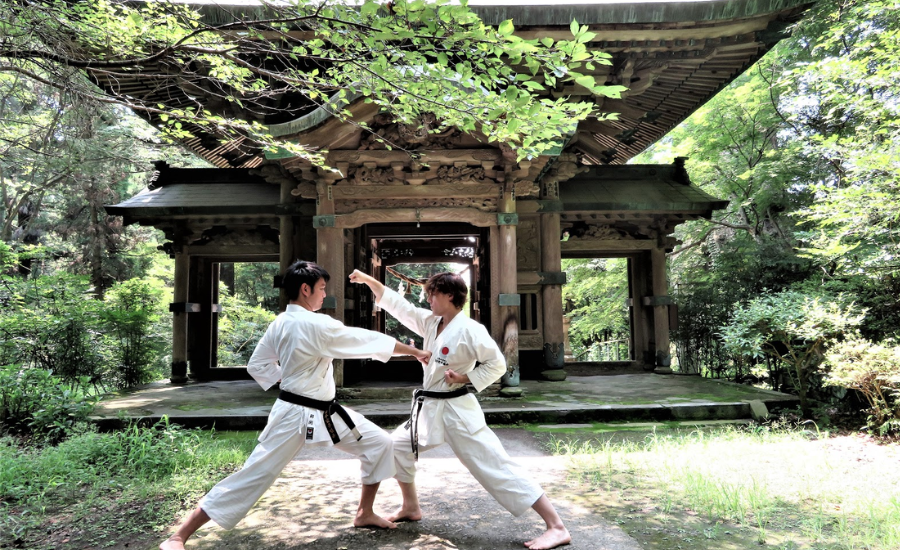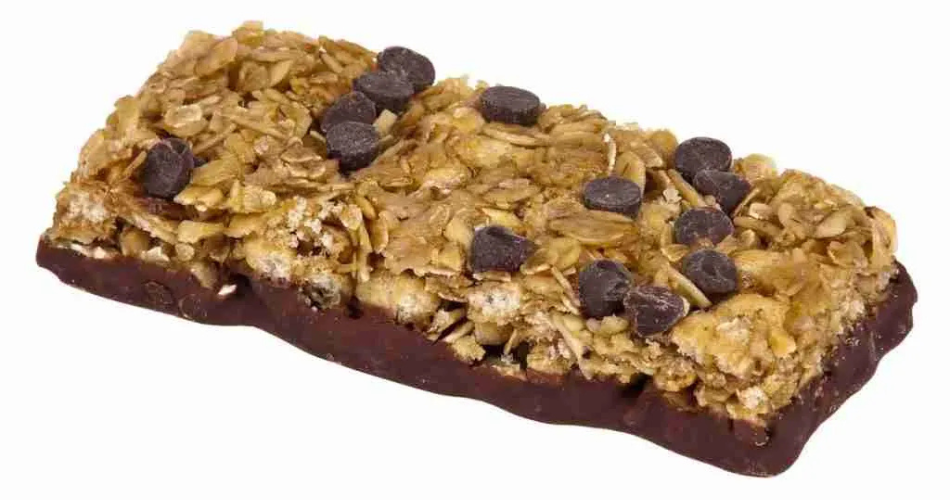Do I step back in Jiyuu Ippon Kumite, or should I advance to challenge my opponent more directly? The choice between retreating and pressing forward is crucial in determining the flow of the match. When practicing karate, particularly during sparring exercises like Jiyuu Ippon Kumite, students often wonder, “Should I step back? “Comprehending the movement dynamics and strategic choices in this type of sparring is vital for both novices and advanced practitioners.” In this discussion, we will explore the various aspects of this training method, delve into the essence of Jiyuu Ippon Kumite, and evaluate whether stepping back is the right approach in these scenarios.
Mastering Jiyuu Ippon Kumite: A Key to Developing Precision and Timing in Karate
Jiyuu Ippon Kumite is a traditional karate practice that serves as a bridge between structured sparring and full free-fighting. The term “Jiyuu” refers to “freedom,” “Ippon” means “one step” or “one point,” and “Kumite” translates to “sparring.” This exercise offers karate practitioners a semi-free sparring experience, where they can refine essential skills such as timing, distance management, and reflexes in a controlled setting.
In this form of sparring, one participant assumes the role of the attacker, while the other takes on the role of the defender. The attacker delivers a predetermined strike, which could be a punch or a kick, allowing the defender to respond. The defender’s challenge is to block, evade, and counter the attack with a single, powerful technique. While the type of attack is agreed upon in advance, the timing and execution require a higher level of spontaneity compared to basic one-step sparring, making Jiyuu Ippon Kumite a valuable tool for developing real-world fighting skills.
Understanding the Role of Stepping Back in Jiyuu Ippon Kumite
In Jiyuu Ippon Kumite, one of the most crucial decisions a practitioner must make is whether to step back while defending against an opponent’s attack. This decision hinges on various factors, including distance, timing, strategy, and the individual’s fighting style.
When Is Stepping Back the Right Move?
Stepping back is often a natural instinct when facing an attack, as it creates additional space, allowing the defender more time to react and mount a counterattack. Below are specific scenarios where stepping back can be particularly advantageous:
- Managing Distance: If the attacker is advancing rapidly, stepping back can help create the necessary space to mount an effective defense. This is especially beneficial when facing an opponent with a longer reach, as it prevents them from closing in too quickly.
- Timing and Safety Considerations: For beginners or those who struggle with timing, stepping back can provide a crucial extra moment to observe the incoming attack and prepare an appropriate response. This tactic can be a safety net while developing more advanced defensive skills.
- Creating Strategic Angles: Stepping back isn’t solely about retreating; it can also involve lateral movement to create new angles. This makes it more challenging for the attacker to maintain their offensive momentum and adapt to the changing dynamics of the fight.
When Is Stepping Back Not the Best Option?
While stepping back can be effective in certain situations, it’s not always the optimal choice. Over-reliance on this tactic can lead to missed opportunities or leave you vulnerable in other ways:
- Favoring Aggressive Counterattacks: More experienced karateka may opt to move forward into the attack instead of stepping back. By closing the distance, they can immediately apply pressure on the attacker, disrupting their technique and taking control of the exchange.
- Avoiding the Pitfall of Losing Ground: Continuously stepping back can convey hesitation or a lack of confidence, potentially giving the opponent the upper hand. If you repeatedly retreat, you might inadvertently cede control of the fight, allowing your opponent to dictate the pace.
- Maintaining Power in Your Counterattacks: Stepping back shifts your body weight away from your opponent, which can reduce the force of your counterattack. In contrast, advancing or standing your ground helps maintain the power and effectiveness of your response.
While stepping back is a useful tool in Jiyuu Ippon Kumite, its effectiveness depends on the context and should be balanced with other defensive strategies to ensure a well-rounded approach to sparring.
Exploring the Dynamics of Jiyuu Ippon Kumite: When to Step Back
To determine whether stepping back is the right choice in Jiyuu Ippon Kumite, it’s essential to understand the underlying principles and mechanics of this sparring technique. Let’s explore the key factors that affect this decision:
The Importance of Distance (Maai)
In karate, controlling the distance, known as maai, is fundamental to effective defense and counterattack. In Jiyuu Ippon Kumite, managing this distance is key to staying within an optimal range where you can defend yourself and strike back effectively. The three primary distances to consider are:
- To-ma (far distance): This range is the safest, where both fighters are out of striking distance. It’s a preparatory zone, allowing time to anticipate the opponent’s moves.
- Chuu-ma (middle distance): The ideal distance in most sparring situations, where both fighters are within striking range. This is the zone where most of the action in Jiyuu Ippon Kumite occurs, as it balances safety with the potential for counterattack.
- Ko-ma (close distance): This range is where close-quarters combat becomes crucial, utilizing techniques like elbows and knees. Stepping back is often a tactic used to avoid getting drawn into this close-range fighting if it doesn’t suit your style.
When your opponent attacks, stepping back is usually employed to maintain chuu-ma, avoiding the danger of getting too close (ko-ma) while still staying within an effective striking range.
Mastering Timing (Sen)
Timing, or sen, is another critical element that dictates whether stepping back is the best option. Karate recognizes three main timing strategies:
- Go no Sen (reactive timing): This approach involves reacting to the opponent’s attack after it has started. Stepping back works well here, as it provides a defensive response, allowing you to assess the attack and counter accordingly.
- Sen no Sen (simultaneous timing): In this strategy, you strike at the exact moment your opponent initiates their attack. Stepping back might not be ideal in this situation, as it could compromise your ability to engage quickly and effectively.
- Sen Sen no Sen (preemptive timing): Here, you anticipate your opponent’s move and strike before they can execute their attack. Moving forward or to the side is often more advantageous than stepping back, as it keeps you in a position of control and dominance.
Utilizing Angles and Footwork
Footwork is an essential skill in Jiyuu Ippon Kumite, influencing not only your ability to evade attacks but also your capacity to counterattack. Instead of merely stepping straight back, skilled practitioners often employ angled movements. This approach not only creates distance but also positions you better for an effective counterattack. Angling your movements allows you to evade the incoming strike while remaining within a range where you can still retaliate with precision.
Psychological Considerations
The psychological aspect of sparring cannot be overlooked. Consistently stepping back might give your opponent the impression that you are defensive or hesitant, potentially giving them a mental edge. On the other hand, stepping forward or sideways can project confidence and control, subtly influencing the psychological dynamics of the encounter. By varying your responses, you can keep your opponent uncertain and maintain the upper hand.
The decision to step back in Jiyuu Ippon Kumite depends on a nuanced understanding of distance, timing, footwork, and the psychological impact on both you and your opponent. Balancing these factors will enhance your ability to make the right strategic choices during sparring.
Different Karate Styles and Their Approach to Stepping Back in Jiyuu Ippon Kumite
Karate styles offer distinct approaches to Jiyuu Ippon Kumite, particularly in the context of whether and how practitioners should step back during sparring. Here’s a deeper look at how various styles approach this aspect of combat:
Shotokan Karate: Prioritizing Distance and Power
Shotokan Karate is characterized by its long stances and powerful, linear movements. In Jiyuu Ippon Kumite, Shotokan practitioners often favor stepping back to create sufficient distance for delivering strong counterattacks, such as the reverse punch (gyaku zuki). The emphasis on maintaining distance allows the fighter to generate maximum force and leverage in their strikes, making stepping back a strategic choice to set up these powerful techniques.
Goju-Ryu Karate: Emphasizing Close-Range Combat
Goju-Ryu Karate is renowned for its focus on close-range fighting and the blending of hard and soft techniques. Unlike Shotokan, Goju-Ryu practitioners are less likely to step back during Jiyuu Ippon Kumite. Instead, they may step in closer to the opponent or move laterally, disrupting the opponent’s rhythm and balance while applying counterattacks. This approach keeps the practitioner within a range where Goju-Ryu’s close-combat techniques, such as short punches and grappling, can be most effective.
Shito-Ryu Karate: Blending Linear and Circular Movements
Shito-Ryu Karate incorporates both linear and circular movements, offering a balanced approach to combat. In Jiyuu Ippon Kumite, stepping back is a common tactic within Shito-Ryu, but it is often combined with angled footwork. This combination allows practitioners to evade the opponent’s attack while simultaneously positioning themselves for effective counterattacks. The versatility in movement makes Shito-Ryu adaptable to various fighting situations, with stepping back serving as one of several tools in the practitioner’s arsenal.
Wado-Ryu Karate: Mastering Evasion and Fluid Movement
Wado-Ryu Karate is distinct for its emphasis on evasion and body movement, known as tai sabaki. In this style, practitioners typically avoid stepping straight back. Instead, they might pivot or slide off the line of attack, using circular footwork to gain a strategic advantage. This approach not only helps in avoiding direct confrontation but also allows Wado-Ryu practitioners to position themselves for quick and fluid counterattacks. The focus on mobility and evasion aligns with Wado-Ryu’s philosophy of blending with the opponent’s movements rather than meeting force with force.
The decision to step back in Jiyuu Ippon Kumite varies significantly across different karate styles, reflecting their unique philosophies and combat strategies. Understanding these differences can enhance a practitioner’s ability to adapt their approach based on the style they are practicing or facing in sparring.
Defensive Strategies for Mastering Jiyuu Ippon Kumite
To achieve success in Jiyuu Ippon Kumite, it’s essential to develop a well-rounded defensive strategy. Here are some key approaches that can enhance your effectiveness:
Observe and Anticipate Your Opponent
Before making any defensive moves, it’s crucial to carefully study your opponent. Pay attention to their stance, rhythm, and any habitual movements they might have. By reading these cues, you can better predict their next move, allowing you to decide the most effective defensive action, whether that involves stepping back, blocking, or countering.
Integrate Footwork with Defensive Techniques
Stepping back should never be a passive retreat. Instead, it should be paired with a defensive technique that neutralizes the incoming attack. For example, when stepping back, you might simultaneously perform an age uke (rising block), which not only protects you from the strike but also sets you up for a quick counterattack. This integration of footwork and technique is crucial for maintaining an active defense.
Execute Precise Counterattacks
Defense in Jiyuu Ippon Kumite is not just about avoiding strikes—it’s also about creating opportunities to counterattack. After stepping back, immediately shift into a counterattack with precision. Whether it’s a powerful gyaku zuki (reverse punch) or a quick mae geri (front kick), your counter should be decisive and aimed at turning the tables on your opponent, transitioning smoothly from defense to offense.
Maintain a Balanced Mental State
A key component of effective defense is your mental state. You need to strike a balance between being relaxed and alert. Excessive tension can slow your movements, while being too relaxed can delay your reactions. Aim to stay calm yet vigilant, ready to react instantly whether the situation calls for stepping back, advancing, or executing a counterattack. This balanced mindset will help you make quick, informed decisions in the heat of sparring.
By incorporating these strategies, you can enhance your defensive capabilities in Jiyuu Ippon Kumite, turning what might seem like a simple retreat into a calculated move that sets you up for successful counterattacks.
The Advantages of Practicing Jiyuu Ippon Kumite
Engaging in Jiyuu Ippon Kumite goes beyond merely mastering defensive moves like stepping back; it provides karate practitioners with a host of valuable benefits that enhance overall martial arts skills:
Enhanced Timing and Reflexes
The semi-free nature of Jiyuu Ippon Kumite is designed to sharpen your reflexes and improve your ability to respond swiftly and accurately. By practicing this form of sparring, you develop the instinct to react to your opponent’s movements with precision, making it easier to anticipate and counter attacks in real time.
Deeper Understanding of Distance Management
One of the critical lessons in Jiyuu Ippon Kumite is the effective management of distance, known as maai. Practitioners learn to gauge the appropriate space between themselves and their opponent, mastering the art of knowing when to close in for an attack and when to create distance to avoid a strike. This skill is vital in maintaining control during a sparring match.
Balanced Approach to Aggression and Defense
Jiyuu Ippon Kumite encourages a balanced mindset, blending controlled aggression with calm and calculated defense. Through consistent practice, you learn to maintain composure under pressure, allowing you to switch seamlessly between offensive and defensive strategies without losing focus or becoming overwhelmed.
Improved Decision-Making Skills
The dynamic and unpredictable nature of Jiyuu Ippon Kumite demands quick, on-the-spot decision-making. As you engage in this type of sparring, you develop the ability to assess situations rapidly, deciding whether to step back, sidestep, or advance based on your opponent’s actions. This enhanced decision-making capability is crucial not only in martial arts but also in real-life scenarios where quick thinking is required.
By incorporating Jiyuu Ippon Kumite into your training regimen, you gain these critical skills, contributing to your overall growth and effectiveness as a karate practitioner.
Avoiding Common Mistakes in Jiyuu Ippon Kumite
Even seasoned karate practitioners can fall into certain habits or make errors during Jiyuu Ippon Kumite. Recognizing and correcting these common mistakes can significantly enhance your performance:
Over-Reliance on Stepping Back
Stepping back is a useful defensive technique, but relying on it too much can make your actions predictable and limit your options. To avoid becoming too predictable, vary your defensive movements by incorporating sidesteps, pivots, and even forward advances. This variety will keep your opponent uncertain and give you more opportunities to counter effectively.
Neglecting to Combine Defense with Counterattacks
A common error is to focus solely on blocking or evading without thinking about the follow-up. Defense in Jiyuu Ippon Kumite should always be paired with a counterattack. After executing a block or evasion, immediately look for an opportunity to counter with a strike. Mastering the seamless shift from defense to offense distinguishes skilled practitioners from others.
Inconsistent Footwork
Footwork is the foundation of effective karate. Inconsistent or sloppy footwork can lead to imbalance, making your techniques less effective and leaving you vulnerable to attacks. To maintain strong footwork, practice moving fluidly while maintaining a stable stance. Pay attention to your foot placement and ensure that each movement is controlled and deliberate.
Telegraphing Your Movements
One of the biggest mistakes in sparring is telegraphing your intentions—making it obvious what your next move will be. Telegraphing gives your opponent the chance to anticipate and counter your actions. To avoid this, focus on making your movements quick, subtle, and unpredictable. This will make it harder for your opponent to read your intentions and keep you in control of the sparring session.
By being mindful of these common mistakes and actively working to correct them, you can improve your effectiveness in Jiyuu Ippon Kumite and become a more versatile and unpredictable fighter.
Mastering the Art of Stepping Back in Jiyuu Ippon Kumite: A Step-by-Step Guide
To excel in Jiyuu Ippon Kumite, consistent practice and attention to detail are crucial. Follow these steps to develop and perfect your ability to step back effectively during sparring:
1. Begin with Foundational Drills
Start your training with basic drills that focus specifically on stepping back with accurate timing. These drills should include blocking, evading, and transitioning immediately into a counterattack. By mastering these fundamental movements in a controlled setting, you lay the groundwork for more advanced techniques.
2. Incorporate Angled Movements
As you gain confidence with stepping back, begin to introduce lateral movements and pivots into your practice. This will help you create angles that not only enhance your defense but also open up new opportunities for counterattacks. Moving at angles can make it more difficult for your opponent to predict your actions, giving you a tactical advantage.
3. Gradually Increase Speed and Intensity
Once you are comfortable with the basic drills and angled movements, start to increase the speed and intensity of your practice sessions. Begin with slow, deliberate movements to ensure accuracy, then progressively accelerate to simulate the pace of real sparring. This gradual escalation will help you adapt to the quick decision-making required in live combat situations.
4. Train with a Variety of Sparring Partners
Practicing with different partners is essential to honing your skills. Each sparring partner brings a unique style and set of challenges, helping you to refine your timing, distance management, and decision-making. Sparring with opponents of varying skill levels will also expose you to different attack patterns and strategies, making you a more adaptable fighter.
5. Record and Analyze Your Sessions
Documenting your sparring sessions can serve as a crucial resource for enhancing your skills. Watching your performance allows you to objectively assess your strengths and identify areas where you can improve. Pay close attention to whether you’re stepping back too frequently or missing opportunities to advance. Self-review and analysis are key to continuous growth and mastery in Jiyuu Ippon Kumite.
By following this structured approach, you can develop a well-rounded skill set in Jiyuu Ippon Kumite, with the ability to step back effectively when needed and capitalize on every opportunity to counterattack.
Facts
- Definition:
Jiyuu Ippon Kumite translates to “free one-step sparring,” where one participant attacks with a predetermined strike and the other defends and counters with a single technique.
- Purpose:
It bridges structured sparring and full free-fighting, focusing on timing, distance management, and reflexes in a semi-free setting.
- Role of Stepping Back:
Stepping back can be strategic for managing distance, providing time to react, and creating angles, but it’s not always the best option.
- When to Step Back:
- Managing Distance: To create space from a rapidly advancing opponent.
- Timing and Safety: For beginners or when more reaction time is needed.
- Creating Angles: To avoid direct confrontation and set up effective counterattacks.
- When Not to Step Back:
- Favoring Aggressive Counterattacks: Moving forward can disrupt the opponent and maintain control.
- Avoiding Loss of Ground: Continuous retreat may show hesitation and cede control.
- Maintaining Power: Stepping back can reduce the force of your counterattacks.
- Style Variations:
- Shotokan Karate: Often steps back to maintain distance and set up powerful strikes.
- Goju-Ryu Karate: Emphasizes close-range combat, less likely to step back.
- Shito-Ryu Karate: Uses a blend of linear and circular movements, including stepping back combined with angled footwork.
- Wado-Ryu Karate emphasizes evasion and smooth movement, generally avoiding direct backward steps.
- Key Principles:
- Distance (Maai): Managing far (to-ma), middle (chuu-ma), and close (ko-ma) distances.
- Timing (Sen) encompasses reactive (go no sen), simultaneous (sen no sen), and preemptive (sen sen no sen) strategies.
- Footwork: Incorporating angles and lateral movements rather than just stepping back.
FAQs
Q: What is the main goal of Jiyuu Ippon Kumite?
A: The main goal is to refine timing, distance management, and reflexes through a semi-free sparring exercise that helps bridge the gap between structured and full free-fighting.
Q: When should I avoid stepping back during Jiyuu Ippon Kumite?
A: Avoid stepping back if it compromises your ability to counterattack effectively, causes you to lose ground, or reduces the power of your response.
Q: How does stepping back impact my defensive strategy?
A: Stepping back can help manage distance and provide reaction time, but over-reliance on this tactic may lead to predictability and missed opportunities for aggressive counterattacks.
Q: How do different karate styles approach stepping back?
A: Styles like Shotokan may favor stepping back to maintain distance, while Goju-Ryu may prefer staying close for effective close-range techniques. Shito-Ryu blends linear and circular movements, and Wado-Ryu focuses on evasion.
Q: What are common mistakes in Jiyuu Ippon Kumite?
A: Common mistakes include over-reliance on stepping back, neglecting to combine defense with counterattacks, inconsistent footwork, and telegraphing movements.
Conclusion
Stepping back in Jiyuu Ippon Kumite is a strategic decision that depends on various factors such as distance, timing, and fighting style. It offers advantages in managing space and timing but should be used judiciously to avoid predictability and loss of control. Understanding the principles of distance (maai), timing (sen), and effective footwork, along with recognizing the approach of different karate styles, will help practitioners make informed decisions during sparring. Balancing stepping back with other defensive and offensive strategies will enhance overall performance and adaptability in Jiyuu Ippon Kumite.
Read Next: England Buzz



